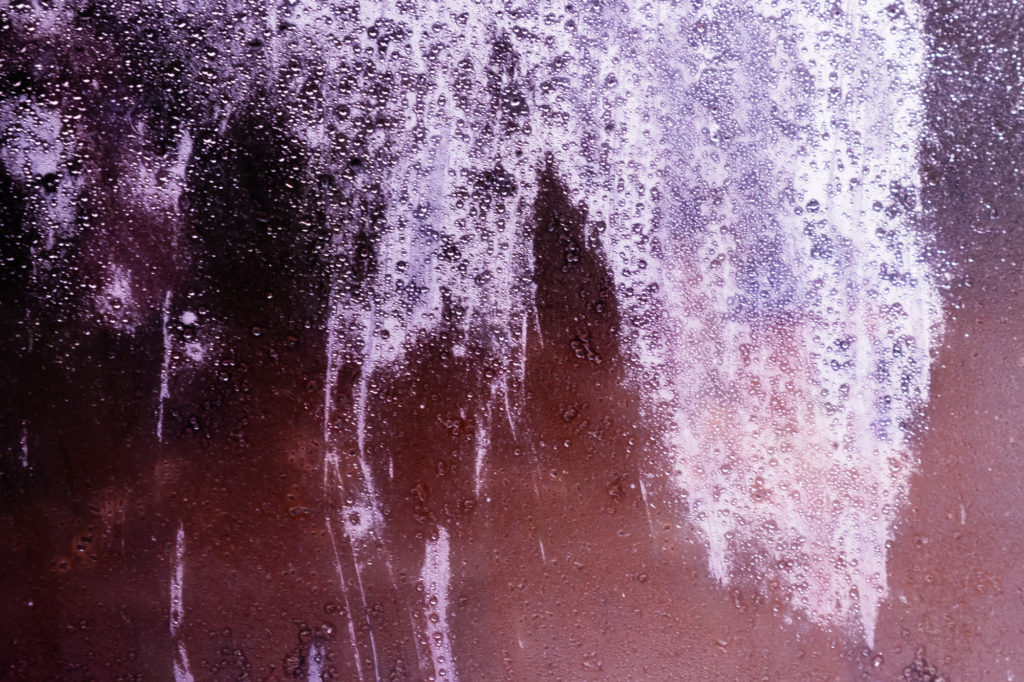The double-glazing in the windows of our home was replaced a year ago. Clearer and even more UV resistant than their twenty year old predecessors, the retrofitted double-glazed panes were noticeably, immediately effective in reducing heat loss. I had researched potential technology before we did the work. And the company we selected sent a consultant out to assess and advise. We made our choices, procurement commenced and five weeks later, we achieved fulfilment.
Supposedly partly self-cleaning, the new glass has since introduced us to the fascinating world of morning dew patterns. I can’t imagine that other creatives haven’t found the phenomena interesting too. So maybe the genre of light dew painting isn’t my invention. We must have missed a trick, or so I was told. If we have dew paintings on our new windows, what we should have installed was an anti-condensation outer pane. A different version of the low-emissivity glass is available. Of course it is.
Window energy ratings are not my thing and it attracts our attention about once a generation. Maybe what we really needed was a better assessment from the technical advisor (sales) before we committed. Let’s face it, we have to live with this for a few decades.
The quality of the glazing is amazing. The longevity is awesome too. But the dew is like having semi-transparent curtains. And what fascinates (and annoys) me is that the patterns are much the same every day.
Like countries on a map, the outlines really don’t change much from dew to dew. No matter how much we wash the exterior or what solvents we use, the overall pattern is the same. Utterly different on each pane but consistent from day to day. The only saving grace is that the droplets change from day to day.
And this matters because the two worst affected panes are at the end of the kitchen table. We would see this at breakfast most dewy mornings if sunrise was at the same time every day. But here, at 53.2650° N, sunrise varies by eight hours every six months. So the patterns are only likely in two transitional months each year. And besides, the heavy dew happens less than 50% of the time.
Light dew paintings are just another seasonal opportunity to look forward to during breakfast. If only they didn’t make me think of bacterial growth in petri dish agar.



Leave a Reply